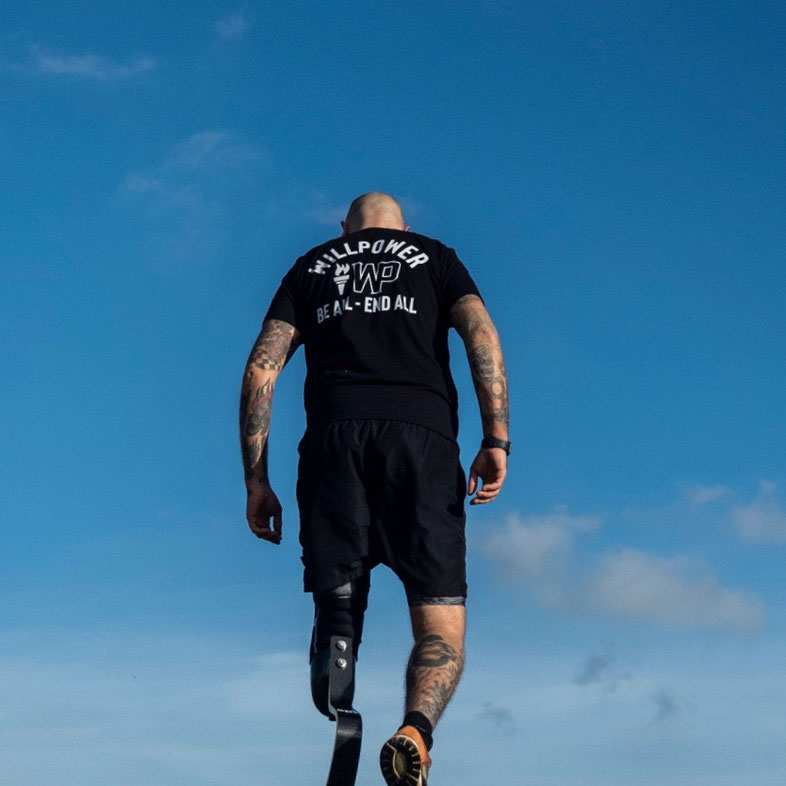
Not Having To Walk The Path Alone
Today I have the pleasure of posting an article from Kim Cremer's blog 'Life goes on, even with a limp'. Many of you probably know Kim aka Kimii.b.c from Instagram. Kim and I plan to do collaborate every now and then over the coming months. And today's post is the kick-off for this new cooperation.
What Reality Actually Expects Me As An Amputee?
In my mind it was like this at the beginning: You have the amputation, then you get a prosthesis and if you are lucky you can walk and stand with it again. However, the Internet showed me sprinters, long jumpers, skateboarders, and handball players. 'Which of all this will be my new reality?' I wondered.
First, to get the discussion started, let me provide you with figures. In 2015 alone, 55,595 lower extremity amputations were performed in Germany. Of these, 52.4% were amputations of the toes (and of similar nature). That still leaves us with 26,442 people who theoretically had to be fitted with a prosthesis in 2015 alone. That's a lot for a single year. If you simply extrapolate this over the last 10 years, 260,442 amputees must have been added in Germany since 2005 alone.
Where Can I Find Reliable Information About My New Life?
Back to my thoughts; Who of you knows, without being affected yourself, a prosthesis user or amputee from among your personal network of friends and colleagues? People you actually know; not amputees you have seen on the Internet or on TV. I couldn't think of anyone. Even more so, I noticed, that you don't deal with this issue if you don't have to.
So, where does one look for information in 2021? On the World Wide Web. There is everything! Have you ever typed "prosthetic leg" into YouTube? Adrenalin, Ninja Warrior, Bikeparvideos, Skater, 24h world record SUPpen with prosthesis (which accompanied me through the amputation). People who are one with their prosthesis at the moment of recording, draw attention to prostheses and show what is possible with an artificial limb. That's cool! Respect to you. But... how did they get there? What was their journey? After what ordeal? How many prosthesis adjustments? And what training did it take to make all this possible? And how do you feel after such an active day?
Now suppose he or she wakes up in the hospital after a motorcycle accident and he/she is missing a leg. A world collapses. Never again will it be like it was just days prior to the accident. Friends try to motivate him/her, show these videos and pictures. Okay, courage to face life, off to the medical supply store. The first prosthesis, but the first steps are sobering. It's not going to work right away with biking and running. It pinches, it stretches, it's uncomfortable. I have to walk in a completely different way, which hurts my hip and back. And how do I tell the technician that it doesn't feel good right now?
A new deep hole opens up. And I know from personal experience that it won't be easy to crawl out of it again. If he or she withdraws out of frustration, it can take a very long time. For some - depending on the character - it might even be impossible to get out of this state.
Now I'm wondering: What would have helped? How to close the gap between the internet and the full reality people face after an amputation?
The Clear Added Value of Peer Support Systems
With a well-structured peer support system that every hospital has access to. And everyone is informed about it! A peer from the region who comes to the hospital, answers the amputee's questions at eye level and realistically tells him what to expect. Clear words from the beginning. Yes, you may be able to run and ride downhill again. But the way might be a stony one. Every prosthesis is unique - and your body changes again and again. So you are already involved in a constant process that you have to accept. If that works out, and the amputee/customer team has gotten used to each other, then we can move on. How long does that take? Months... years? You don't know. Because when you change technicians, for example, you almost start from scratch.
You have to get to know your own body again. Where exactly odes the socket rub? Where does it pinch? Everything feels different. You think a bone is jammed, but it's the tendon on the other side. Find that out... An eternal game of patience. But a game you can win! I don't want to demotivate anyone here; I don't want to attack anyone. I want to educate and especially encourage all other people using a prosthesis to share their experience. Let your doctors know that you could support them. If you can handle it, that is!
That was something I had on my mind this morning; something I wanted to share with you. Be active, fight your way back into life as best you can! Inform yourselves properly and realistically. Write to the people you look up to - I believe that most of them will not tell you about pie in the sky but be honest with you, because they have all learned the hard way. Patience, body awareness, and by the way always appreciation.
In this sense: Stay authentic and believe in yourself!

Guest post by Kim Cremer. Kim lost his lower leg in a motorcycle accident years ago. He is very active in sports, supports other amputees to get active again and is the creator behind the only German-language podcast about amputation and prosthetics. To learn more about Kim, it's worth following him on Instagram, signing up for the Prothesengemeinschaft, and subscribing to the corresponding Podcast. Kim also has a very readable Blog, , where this article first appeared.